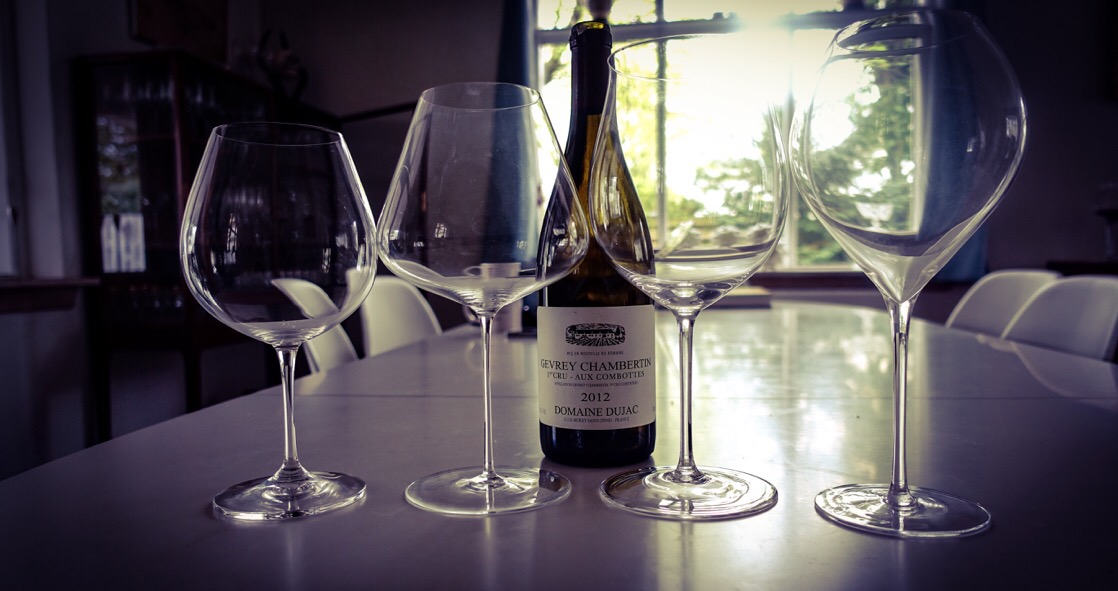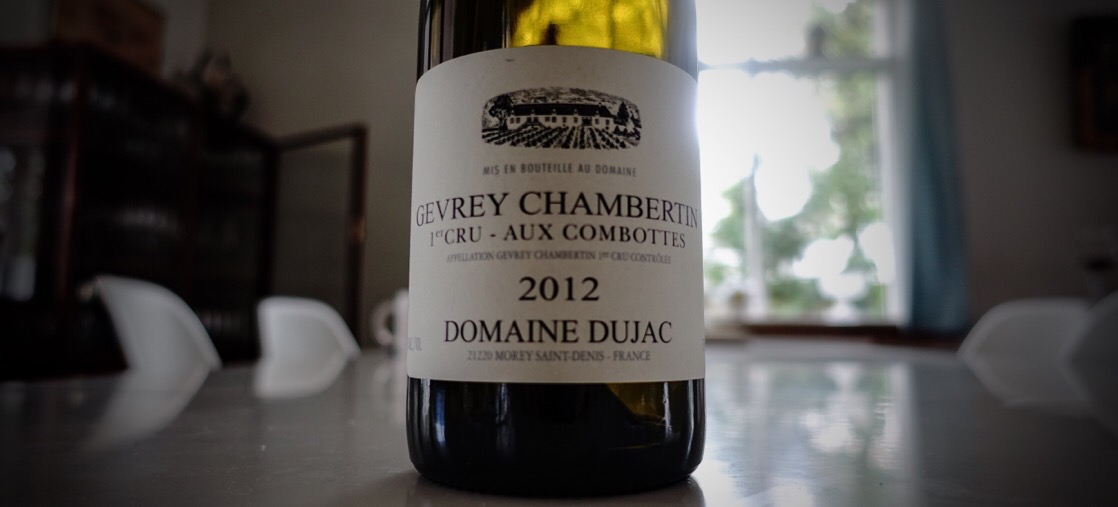Testing and evaluating stemware is a complex process, as the wine often changes over time after the initial sip .. it changes in the glass and also in the bottle. I reality you might think that one glass is best initially, but as the wine develops in the bottle … with air and temperature … the choise of ideal stemware can change.

Knowledge, experience and perception
One of the interesting aspects of testing stemware is that it really shed light on the differences between the stemware, thus also on fundamental characteristics of the different glasses.
In this test I had four Burgundy goblets:

- Riedel Vinum Burgundy
- Zalto Burgundy
- Riedel Sommelier Burgundy Grand Cru
- Lehmann Jamesse Grand Rouge
I had two major insights from comparing these stems … or should I say it raised the awareness of some rather fundamental trades that one should have in mind when using the different glasses.
The perception of sweetness
The first insight is the perception of sweetness. The Zalto’s have less focus on the sweet notes and the ripeness level therefore seems lower using the Zaltos. This is one of the factors behind the Zaltos ability to digg out details from younger wines, and to focus on the mineral and structural elements of the wines.
The Riedels show more sweetness as do the Lehmanns, and therefore these glasses also struggle a bit with uncovering the details on the palate of the young Dujac tasted … the 2012 Gevrey Aux Combottes.
The projected image – the distance between the elements
The stemware expose or projects the wine to your palate and some glasses produce a large image with plenty of space to reveal the details … one could say the distance between the elements of the wine is larger, thus giving room to focus on both the individual elements and the wine as a whole.
Both the Zaltos and the Riedel Sommeliers projects a larger image of the wine than the two other glasses in this test … and they therefore inherently reveal more details especially on the palate.
Looking at the combination of the two insights, the perception of sweetness and the scale of the projected image – they are in my view crusial for the amount of details being presented. The Zaltos offer a large image of the wine and less perceived sweetness … so a lot of detail mainly related to the structural elements but also the fruit becomes more detailed as it appears cooler and more nuanced.
To the notes …
Domaine Dujac, Gevrey-Chambertin Aux Combottes 2012
Firstly a tasting note based on the impressions from all four types of stemware.
The Gevrey-Chambertin Aux Combottes 2012 from Dujac is a both delightful and charming glass. In the nose .. on a fruit day … lovely sweet red fruit, strawberries, pomegranate and a range of red forest berries – brought foward by a fine earthy minerality. On the palate fine juicy red fruit, quite weighty and sweet. It’s pure and focused but a bit closed on the palate currently. Fine+ (92p), Drink from 2023.

Individual impressions from the four types of stemware
Riedel Vinum
The Riedel Vinums offer a sweet and slightly superficial bouquet – sweet and rather detailed notes of strawberries with a discrete earthy minerality and initially hints of gunpowder – alcohol a bit forward. On the palate quite densely presented young fruit offering only little expression of terroir. Expand a bit after some time in the glass. Slightly one-dimensional compared to the three other stems.
Zalto Burgundy
The Zaltos is projecting a larger image with a initial focus on the structural components … quite closed at cellar temperature. After some time in the glass more sweet fruit … airy and structured on the palate without the slightly dense feel of the Vinums. Quite close to Riedel Sommelier palate wise but less sweetness in the fruit. Expansive with plenty of space between the elements … in the end sweet fruit beautifully interlinked with the fine minerality. Not perfect but show the palate of the Dujac very well at this early stage.
Riedel Sommelier Burgundy Grand Cru
The Riedel Sommeliers is offering a sweeter image of the Dujac Aux Combottes than the Zaltos. In the nose initially hints of sweet fruit – strawberries and pomegranate .. whiff of gunpowder … quite expressive slightly stemmy. Airy and open with a good structure … bit less detailed than the Zalto … with a bit more sweetness on the fruit. After some time in the glass it looses some transparency as the temperature increases and the density on the palate intensify. Projects a big image of the wine .. but seems a bit muted at times.
Lehmann Jamesse Grand Rouge
The Lehmann is offering a rich and slightly opulent expression of the Dujac. In the bouquet sweet red fruit .. strawberries and pomegranate … lovely depth in the fruit quite expressive. More weight and denseness that the Sommelier and the Zaltos .. but more nuanced than the Riedel Vinums.
More emphasis on the sweetness in the fruit … tightly wound but still quite airy and juicy. Lovely depth in the fruit … not as detailed and large scaled as the Zaltos or Riedel Sommeliers.
Stylewise the Lehmanns resembles the Riedel Vinums most, but they offer more depth and complexity .. and a bit of the holistic qualities found in the Riedel Sommeliers. That being said they do lack a bit of detail to battle the Zaltos and the Riedel Sommeliers. Will be exiting to try these glasses with an older wine.
Summing up in a few words
The Zaltos are winning this round – the details and the large scaled image of the wine is great to evaluate a young wine from a rich year like 2012.
The Riedel Sommeliers are quite close .. but in the end lacking some transparency and details. The Lehmanns offer a lovely presentation but is also lacking a bit of detail and is offering a sweeter and smaller image of the wine. It is however a very charming image of the Dujac wine .. so they offer something extra on the hedonistic dimension.
Riedel Vinum is again a bit superficial and lacking some depth and detail compared with the other stemware … but used on their own they still do a fine job. A young Burgundy from a rich year like 2012 is however not the best match for the Vinums.

 - A true vin d’émotion – a Burgundy of passion
- A true vin d’émotion – a Burgundy of passion - A truly hedonistic wine – lively and enjoyable
- A truly hedonistic wine – lively and enjoyable - A vivacious wine for pure indulgance
- A vivacious wine for pure indulgance - A potential vin d´émotion - frais et léger
- A potential vin d´émotion - frais et léger